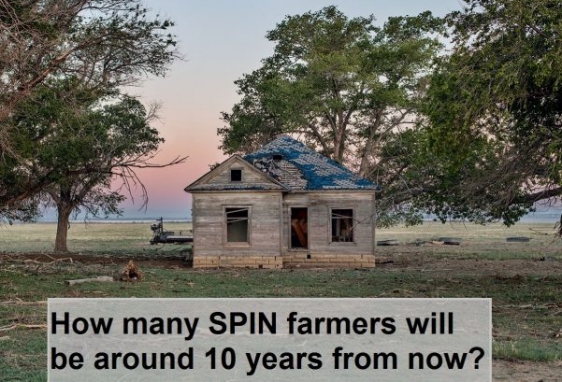Courtesy of Roxanne C. , Philadelphia PA
Since its launch 10 years ago, SPIN-Farming has come to mean many things. While it embodies lots of food and farming trends, it’s practitioners know it as a profit-driven production system coupled with a business model. That’s what it is meant to be.
If you have come to know it by hearsay, you might be surprised to learn it’s not all it’s said to be. Over the next 10 weeks we’ll do a countdown of some of the claims that should be taken with a grain of salt. Here is # 1.
# 1. SPIN-Farming is sustainable
This is a specious statement, as are any claims to sustainability. The reality is, Who knows?
Whether, and how, anything can be sustained can only be known in hindsight. To truly prove this claim you need to take the long view and base the answer on practice, not theory. It’s encouraging and gratifying that SPIN is helping to channel some of the new found enthusiasm for getting your hands in the dirt into new farming businesses. But the mark of success for SPIN will be how many of these growers have staying power.
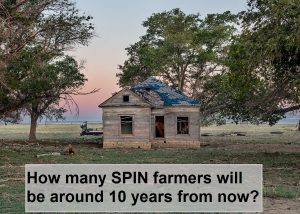
Check back to see how many SPIN farmers have started – and stayed – in business in another 10 years.
# 2. SPIN-Farming is a movement
Food and farming-related movements have sprouted like weeds over the last 10 years, and SPIN-Farming can be used to advance many of them. It’s a tool, not a cause.
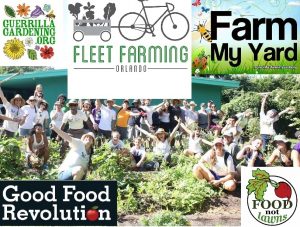
Whether it’s used as a mission, a business or for self expression, we’ve never heard a bad reason to grow food. SPIN’s only role is helping people find the business opportunity in something they feel passionate about and love to do. No matter your purpose, it just makes sense to pay the bills by proving your cause.
# 3. SPIN-Farming requires tilling.
SPIN-Farming recommends the use of a tiller because in a business time is money, and a tiller makes very fast work of prepping and replanting. But using a tiller is not always practical or possible in some cases. And it is a significant investment. We are also aware of the fervent opposition to tilling among some growers who believe that it damages soil structure. SPIN does not dictate any one method of soil prep or maintenance but recommends using local inputs and composting if you can. It is a production system, not a belief system.
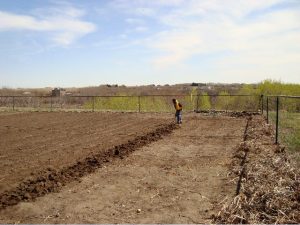
See related posts:
Working the Soil is What Farmers Do
What Is the Best Way to Prep Land?
# 4 SPIN-Farming is market gardening.
SPIN-Farming’s scale and growing practices are no different than market gardening. What is novel is the SPIN-Farming system which standardizes how a market garden is planned, created and run. It provides everything you’d expect from a good franchise: a business concept, marketing strategy, pricing guidelines, financial benchmarks and a detailed day- to-day workflow. In creating a reproducible process it really isn’t any different from McDonald’s.
While most market gardening learning programs focus primarily if not exclusively on agricultural practices, SPIN emphasizes the business aspects and provides a financial and management framework for having revenue goals drive the agriculture, rather than the other way around.
While other market gardening learning programs address growing, marketing and management,the SPIN-Farming system ties them altogether to keep you focused on what matters most to generating steady, consistent, progressively higher higher cashflow so that you have more control over outcomes and income. It also provides specific benchmarks to measure progress, so that you know if you are under or over achieving.

Now that local foods represents an $11 billion+ industry, according to the USDA, the practice of market gardening is becoming professionalized and competitive. The SPIN-Farming system quantifies exactly how lucrative and rewarding success can be.
See related posts:
Performance-based Farming: How Well Are You Doing?
Revenue Is the Benchmark to Beat
# 5 SPIN-Farming is yardsharing.
Yardsharing is an option outlined in the SPIN-Farming system, but it is not a defining component. To remove the main barrier to entry for new farmers, SPIN-Farming outlines a multi-locational model that has been used by SPIN’s founder, Wally Satzewich, for over 15 years. It is the same as yardsharing – a farmer secures the use of backyards or front lawns or unused lots instead of having to invest in farmland. Terms and tenure vary. The number of plots that comprises Wally’s farm have ranged from 11 to 25, with the total never more than 2/3 of an acre, or around 30,000 square feet. Plots have come and gone, depending on various circumstances.
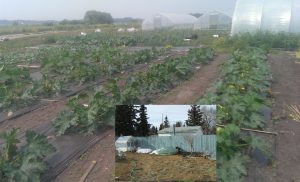
Adithya Ramachandran started using SPIN-Farming on several backyards in the city. He then bought 120 acres. His production area still totals only 25,000 sq. ft and he still considers himself a SPIN farmer.
The point is that SPIN farmers can make cropland wherever they happen to be. Many SPIN farmers, however, have sizable properties and do not have to resort to yardsharing. And those who start out yardsharing sometimes move on to a single plot of land or buy traditional farms.
Here are negotiating points that should be addressed if you decide to do yardsharing. Its benefits are many – it is low-risk, and high-profile if the yard is visible to passersby. It can turn out to be a great way to market your produce!
# 6 SPIN-Farming uses set pricing of $3 per unit or 2 for $5.
There is no set pricing in SPIN-Farming, but there are pricing strategies which are outlined in the learning series. There are two other rules of thumb to keep in mind on pricing:
>>>80% of your business will come from 20% of your customers
>>>If 20% of potential customers don’t pass you by complaining your prices are too high, you aren’t charging enough
The exact percentages above aren’t important, but the points are:
>>> you need to capture whatever percent of the market that is willing to pay you what your produce is worth, not the largest percent of the market
>>> you need to charge pricing that makes being in business worth your while, and hold to it (of course you have to back it up with quality products)
An important point to understand when it comes to SPIN concepts and processes is that practice overrules orthodoxy. SPIN farmers are master rule breakers – especially rules of their own devising!
# 7 SPIN-Farming is just annual plants.
Perennial crops are frequently used on SPIN farms. They are used in areas that might be difficult to put into annual production, such as perimeter areas. Perennial crops are usually low maintenance so they are also used on multi-locational farms that span large areas. If you have a lot of land in play these types of crops reduce the amount of labor needed, and make overall farm operations much more manageable. Many can be sold through multiple sales channels, and can be worth a lot of money – $1000+ per segment.
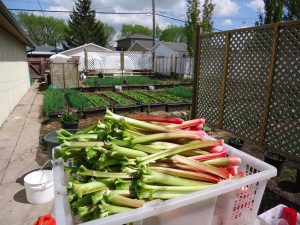
Examples of perennial crops include horseradish, mint, rhubarb, raspberries, sunchokes, strawberries. There are many, many others.
That is the point – to have as many options as possible, and be constantly changing them up. SPIN farms are comprised of annual, perennial, and even foraged crops. Crop planning is mix of both strategy and serendipity
To be successful you need to be a reality-based farmer, not a rules-based farmer.
#8 SPIN-Farming is Square Foot Gardening.
Pictures are worth a thousand words.
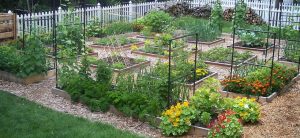
Square foot gardening.

SPIN-Farming on 2.500 sq. ft.
To turn garden-size spaces into farm-size income you need to maximize your growing space in order to produce significant volume. But SPIN-Farming goes far beyond space utilization. It also includes professional grade harvesting and post-harvesting practices, an operations management framework and a business model. Its aim is to achieve progressively higher levels of revenue, with key benchmarks provided.
# 9: SPIN-Farming is urban farming. It doesn’t have to be. SPIN-Farming can and is practiced wherever there are markets to support it. It greatly reduces the amount of land needed for commercial crop production, so the land base a farmer needs is no bigger than some backyards, front lawns and neighborhood lots. In fact the land base for many SPIN farmers is backyards, front lawns and neighborhood lots. It is also non-mechanized and does not use harsh chemicals. So it is particularly suited to densely populated areas since it eliminates the conflicts posed by larger scale agriculture. However, its core concepts of relay cropping, land base allocation, workflow practices and direct marketing are practiced on suburban and rural farms as well.
# 10: SPIN-Farming teaches how to farm.
It doesn’t. It teaches how to make money growing food. Rather than duplicating existing farm education programs that focus primarily on agricultural practices, SPIN-Farming provides a financial and management framework for having business drive the agriculture, rather than the other way around. It works much like a franchise, without the cost, conformity or complications.
A common complaint from beginning farmers is they invest years of training for a job that barely pays. SPIN’s online learning programs and membership in its online support group is a low-cost, low-risk alternative. You can find out quickly if you’re cut out for farming without taking on the traditional farm commitments of owning lots of land, investing piles of money and making a big lifestyle change. You get just what you need to know to start, without being overwhelmed by knowledge that is more appropriate to acquire later in your career. The money you save from not having to commit to more elaborate programs can be invested in your farm infrastructure, which, following the classic SPIN approach, is simple and affordable.
TO GET AN UP-TO-THE-MINUTE VIEW OF WHAT SPIN-FARMING IS NOW VISIT ITS WEBSITE HERE.

